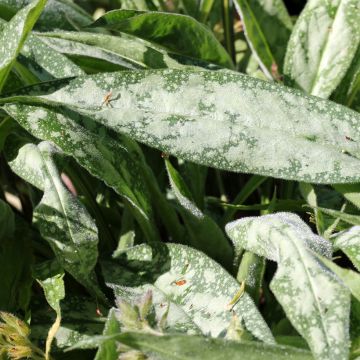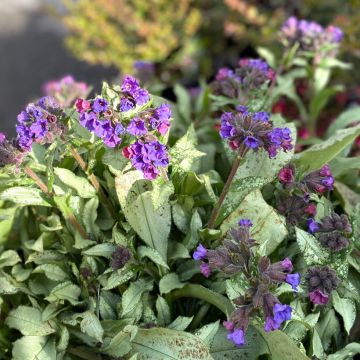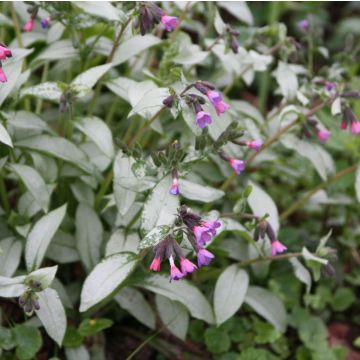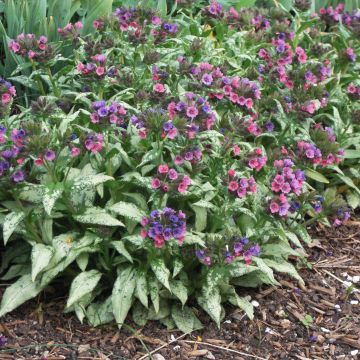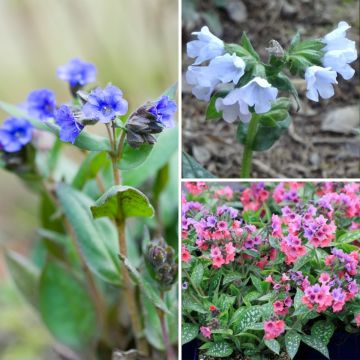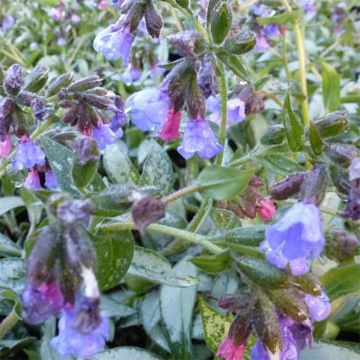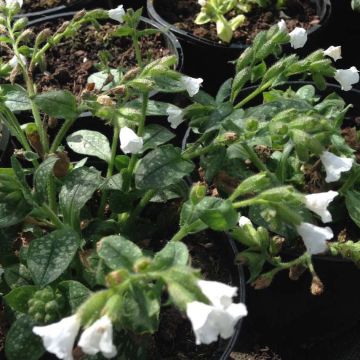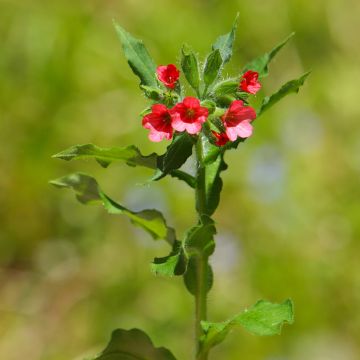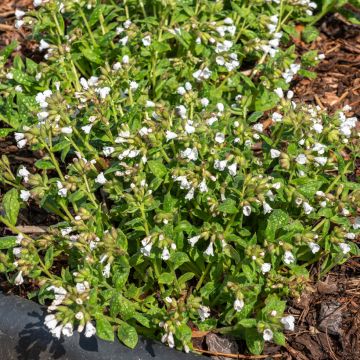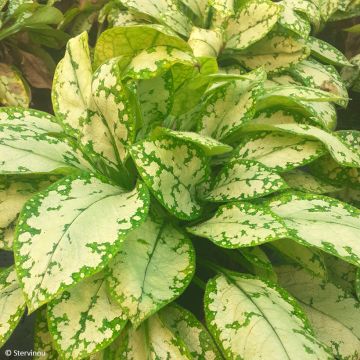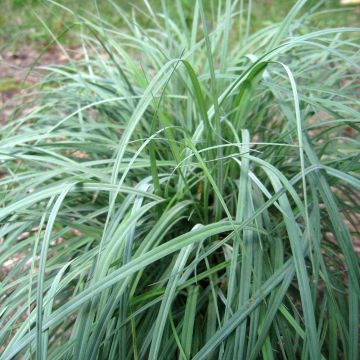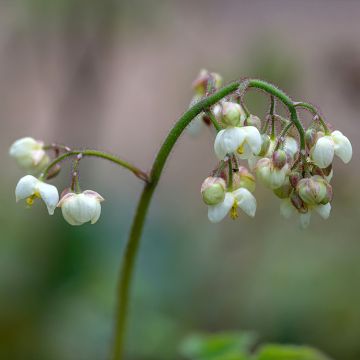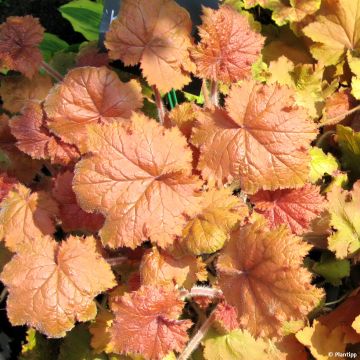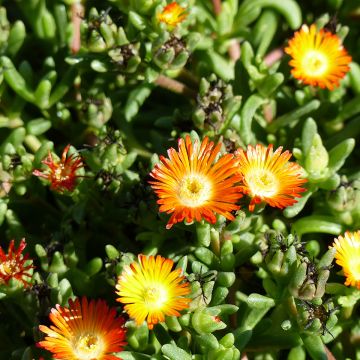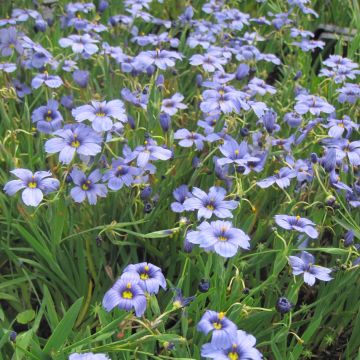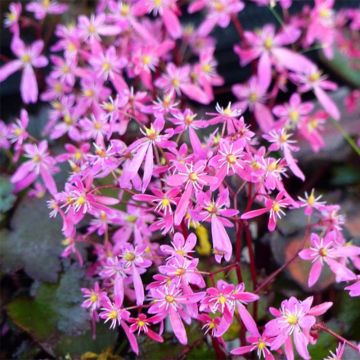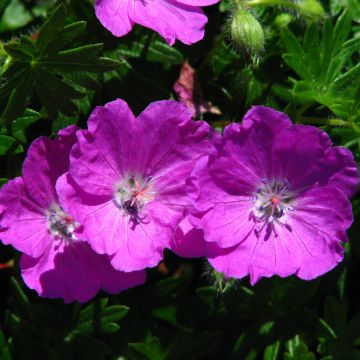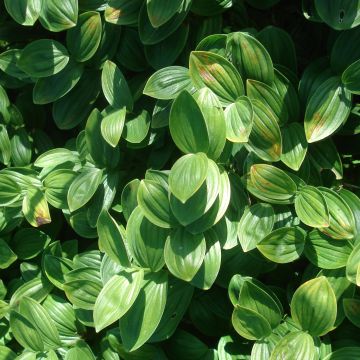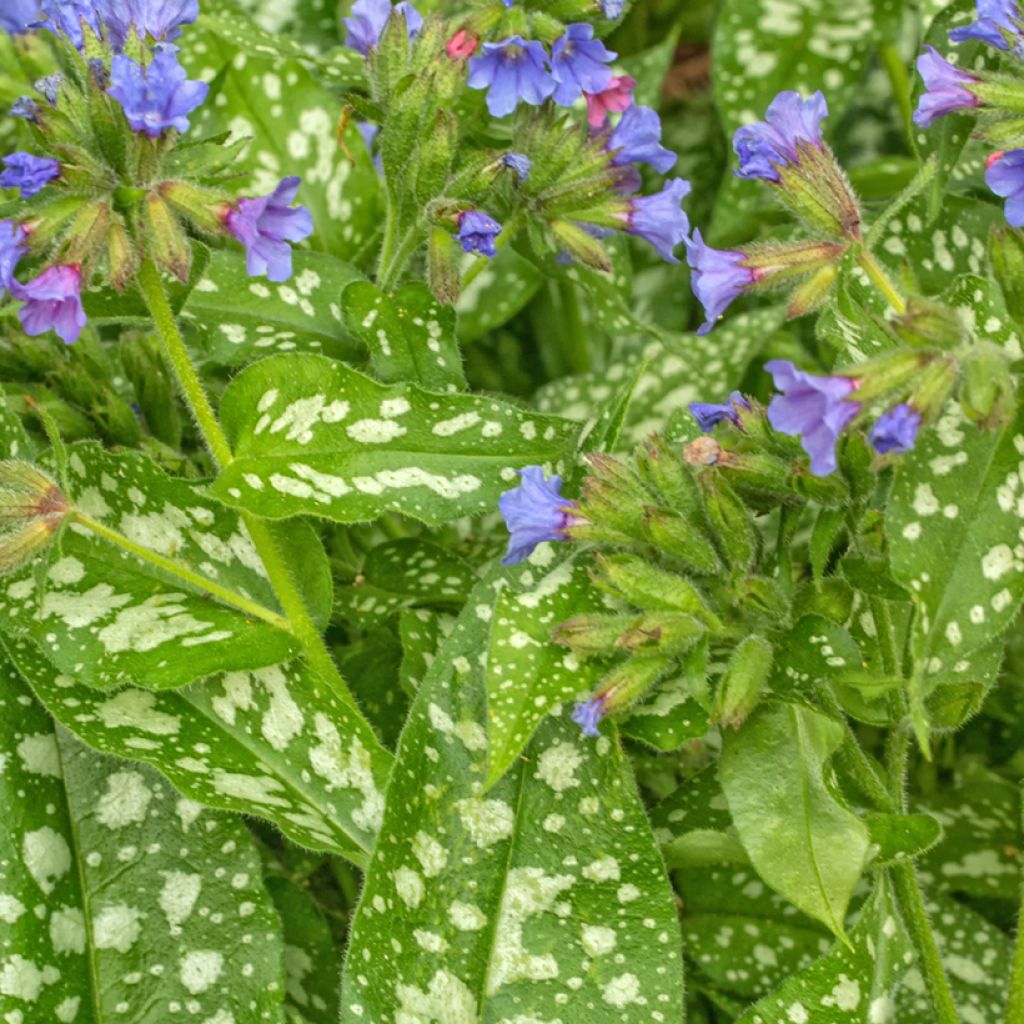

Pulmonaria Trevi Fountain - Lungwort
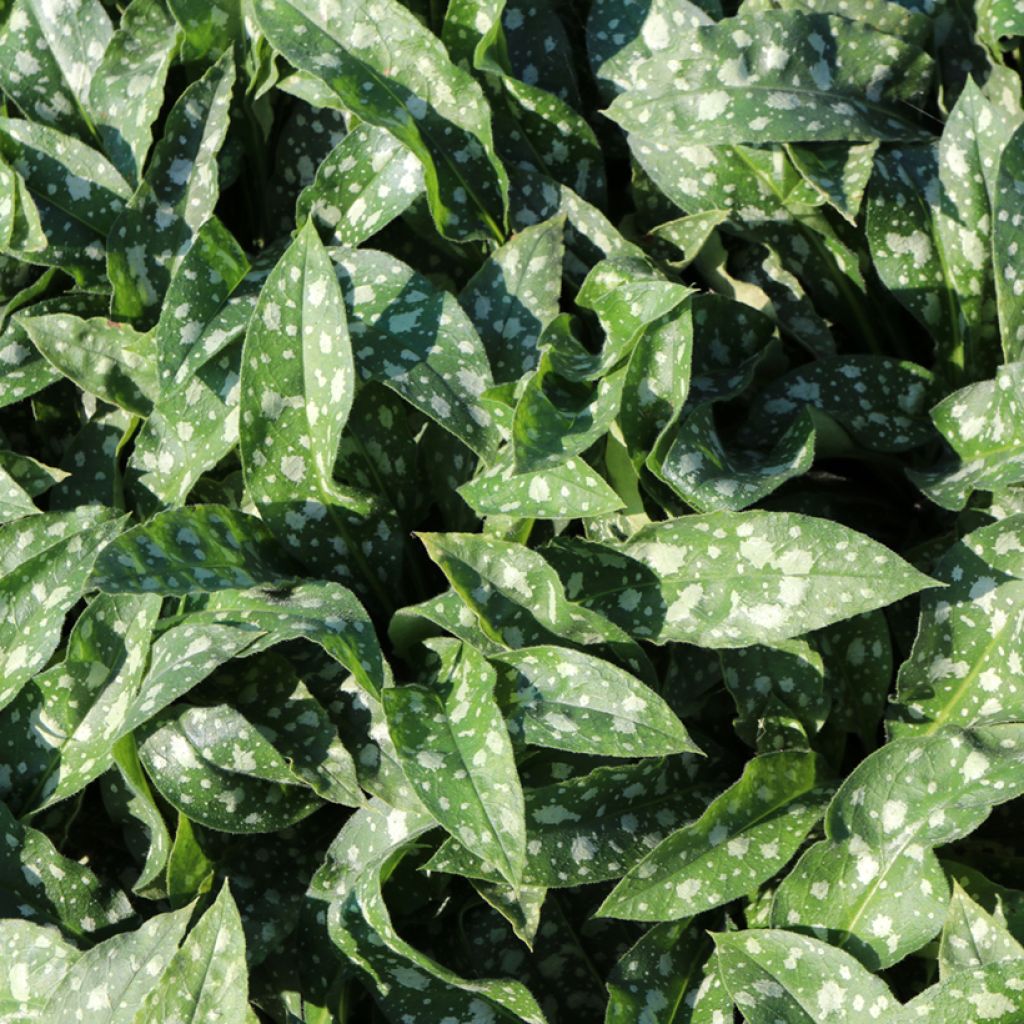

Pulmonaria Trevi Fountain - Lungwort
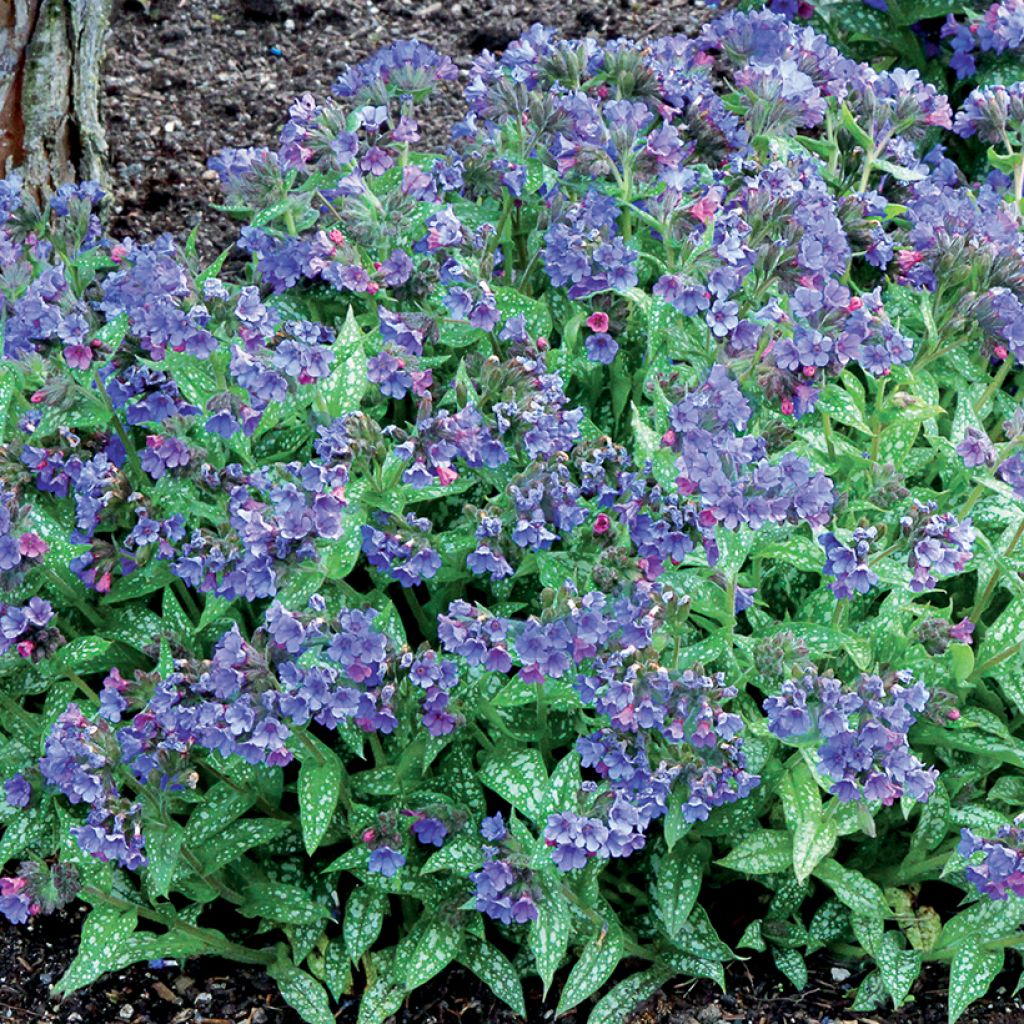

Pulmonaria Trevi Fountain - Lungwort
Pulmonaria Trevi Fountain - Lungwort
Pulmonaria Trevi Fountain
Lungwort
This item cannot be shipped to the selected country
Delivery charge from €5.90
Delivery charge from €5.90
More information
Schedule delivery date,
and select date in basket
This plant carries a 12 months recovery warranty
More information
We guarantee the quality of our plants for a full growing cycle, and will replace at our expense any plant that fails to recover under normal climatic and planting conditions.
From €5.90 for pickup delivery and €6.90 for home delivery
Express home delivery from €8.90.
From €5.90 for pickup delivery and €6.90 for home delivery
Express home delivery from €8.90.
Does this plant fit my garden?
Set up your Plantfit profile →
Description
The Pulmonaria or 'Trevi Fountain' lungwort is renowned for its floriferousness and the length of its flowering period, among the longest for varieties with blue flowers. This spreading perennial forms a wider than tall clump, with beautiful elongated green foliage punctuated with silver spots. From March onwards, clusters of small intense blue flowers appear above the foliage, serving as a true showcase. Gradually spreading, this very hardy perennial forms superb carpets in partially shaded and cool locations. It is unparalleled for brightening up a woodland area and also forms beautiful patches of vegetation at the edge of large shrubs or trees.
The 'Trevi Fountain' hybrid lungwort is a herbaceous perennial plant belonging to the borage family, known through the various herbaceous species that adorn our gardens or populate our countryside and forests: Forget-me-nots, Comfrey, Brunnera, Borage, etc. 'Trevi Fountain' is a hybrid variety, derived among others from Pulmonaria longifolia, a plant widespread in northwestern and southwestern Europe, up to an altitude of 2000 m (6562ft). Perfectly hardy, it grows in woodlands and damp meadows, and is recognised by its very long leaves, which is why it is called longifolia. Its narrow, elongated foliage is about seven times longer than it is wide and marbled with silver-white patches.
These general characteristics can be found in the horticultural variety 'Trevi Fountain', named in honor of the famous Trevi Fountain in Rome. It forms a dense clump of long, pointed leaves, while the base is directly attached to the stem without the intermediate of a petiole (known as a sessile leaf). Ranging from medium to dark green, the leaf surface is irregularly maculated with silver-white spots. Ornamental, this foliage is semi-evergreen, persisting on the plant from February to November. The plant gradually spreads, forming a clump 30 cm (12in) in height and 40 cm (16in) or more in width, with a general ground cover habit, but with upright stems. From the month of March or April depending on the climate, small clusters of tightly packed flowers appear at the ends of the stems. Tubular at the base, their corolla opens trumpet-shaped at the tip and displays a magnificent cobalt blue colour. The flowering, which can last until May, is beautifully highlighted by the darker foliage, creating a superb contrast. Very floriferous, this variety is ideal for adding colour to a shaded area of the garden. The creeping rhizome of lungworts produces new leaf clumps after flowering, expanding the colony.
A perennial and extremely hardy, this 'Trevi Fountain' lungwort is perfect for enhancing a shaded border, at the edge of a tree trunk or even in a woodland. Combine it with other perennials and shrubs that share the same shade and moisture requirements to create an attractive scene all year round. In winter, the various species of Sarcococca with their evergreen foliage, usually dark green, will reward you with their highly fragrant white flowers. Also early in the season, the Daphne odora Aureomarginata is a small evergreen shrub with green leaves edged in yellow, and light pink flowers that perfume the garden in February and March. The rich range of Camellias will allow you to extend the flowering season into spring and even autumn and winter with C. sasanqua, with flowers that are all more beautiful than the others. And for summer, nothing beats Hydrangeas that offer an almost inexhaustible diversity of shapes and colours!
The name "lungwort" comes from the ancient theory of signatures, which held that plants resembled the diseases they were supposed to cure. In this case, it was pulmonary consumption (tuberculosis), as the leaf of the common lungwort has the shape of a lung and the spots on its surface could symbolize lung alveoli.
Report an error about the product description
Pulmonaria Trevi Fountain - Lungwort in pictures


Flowering
Foliage
Plant habit
Botanical data
Pulmonaria
Trevi Fountain
Boraginaceae
Lungwort
Cultivar or hybrid
Other Pulmonaria - Lungwort
Planting and care
The Lungworts are excellent hardy perennial plants of leafy undergrowth. They find the necessary spring moisture for their development and, as they bloom early, they also find sufficient light before the trees have their leaves. They are not afraid of limestone and they all like a fresh humus-bearing soil, but well-drained, which is often the case in a clear undergrowth, where the humus from dead leaves nourishes them and the tree roots drain excess water. That being said, they also accept a shaded situation on the edge of a flower bed, and manage to grow in heavy, very clayey soils. On the other hand, they do not appreciate dry conditions. Therefore, when planting, add compost to promote water retention in your soil.
Planting period
Intended location
Care
-
, onOrder confirmed
Reply from on Promesse de fleurs
Ground cover perennials
Haven't found what you were looking for?
Hardiness is the lowest winter temperature a plant can endure without suffering serious damage or even dying. However, hardiness is affected by location (a sheltered area, such as a patio), protection (winter cover) and soil type (hardiness is improved by well-drained soil).

Photo Sharing Terms & Conditions
In order to encourage gardeners to interact and share their experiences, Promesse de fleurs offers various media enabling content to be uploaded onto its Site - in particular via the ‘Photo sharing’ module.
The User agrees to refrain from:
- Posting any content that is illegal, prejudicial, insulting, racist, inciteful to hatred, revisionist, contrary to public decency, that infringes on privacy or on the privacy rights of third parties, in particular the publicity rights of persons and goods, intellectual property rights, or the right to privacy.
- Submitting content on behalf of a third party;
- Impersonate the identity of a third party and/or publish any personal information about a third party;
In general, the User undertakes to refrain from any unethical behaviour.
All Content (in particular text, comments, files, images, photos, videos, creative works, etc.), which may be subject to property or intellectual property rights, image or other private rights, shall remain the property of the User, subject to the limited rights granted by the terms of the licence granted by Promesse de fleurs as stated below. Users are at liberty to publish or not to publish such Content on the Site, notably via the ‘Photo Sharing’ facility, and accept that this Content shall be made public and freely accessible, notably on the Internet.
Users further acknowledge, undertake to have ,and guarantee that they hold all necessary rights and permissions to publish such material on the Site, in particular with regard to the legislation in force pertaining to any privacy, property, intellectual property, image, or contractual rights, or rights of any other nature. By publishing such Content on the Site, Users acknowledge accepting full liability as publishers of the Content within the meaning of the law, and grant Promesse de fleurs, free of charge, an inclusive, worldwide licence for the said Content for the entire duration of its publication, including all reproduction, representation, up/downloading, displaying, performing, transmission, and storage rights.
Users also grant permission for their name to be linked to the Content and accept that this link may not always be made available.
By engaging in posting material, Users consent to their Content becoming automatically accessible on the Internet, in particular on other sites and/or blogs and/or web pages of the Promesse de fleurs site, including in particular social pages and the Promesse de fleurs catalogue.
Users may secure the removal of entrusted content free of charge by issuing a simple request via our contact form.
The flowering period indicated on our website applies to countries and regions located in USDA zone 8 (France, the United Kingdom, Ireland, the Netherlands, etc.)
It will vary according to where you live:
- In zones 9 to 10 (Italy, Spain, Greece, etc.), flowering will occur about 2 to 4 weeks earlier.
- In zones 6 to 7 (Germany, Poland, Slovenia, and lower mountainous regions), flowering will be delayed by 2 to 3 weeks.
- In zone 5 (Central Europe, Scandinavia), blooming will be delayed by 3 to 5 weeks.
In temperate climates, pruning of spring-flowering shrubs (forsythia, spireas, etc.) should be done just after flowering.
Pruning of summer-flowering shrubs (Indian Lilac, Perovskia, etc.) can be done in winter or spring.
In cold regions as well as with frost-sensitive plants, avoid pruning too early when severe frosts may still occur.
The planting period indicated on our website applies to countries and regions located in USDA zone 8 (France, United Kingdom, Ireland, Netherlands).
It will vary according to where you live:
- In Mediterranean zones (Marseille, Madrid, Milan, etc.), autumn and winter are the best planting periods.
- In continental zones (Strasbourg, Munich, Vienna, etc.), delay planting by 2 to 3 weeks in spring and bring it forward by 2 to 4 weeks in autumn.
- In mountainous regions (the Alps, Pyrenees, Carpathians, etc.), it is best to plant in late spring (May-June) or late summer (August-September).
The harvesting period indicated on our website applies to countries and regions in USDA zone 8 (France, England, Ireland, the Netherlands).
In colder areas (Scandinavia, Poland, Austria...) fruit and vegetable harvests are likely to be delayed by 3-4 weeks.
In warmer areas (Italy, Spain, Greece, etc.), harvesting will probably take place earlier, depending on weather conditions.
The sowing periods indicated on our website apply to countries and regions within USDA Zone 8 (France, UK, Ireland, Netherlands).
In colder areas (Scandinavia, Poland, Austria...), delay any outdoor sowing by 3-4 weeks, or sow under glass.
In warmer climes (Italy, Spain, Greece, etc.), bring outdoor sowing forward by a few weeks.

































